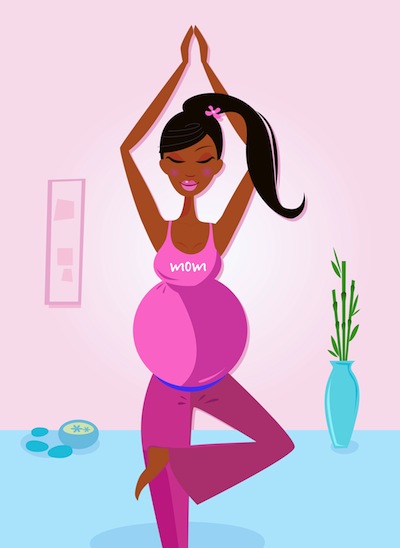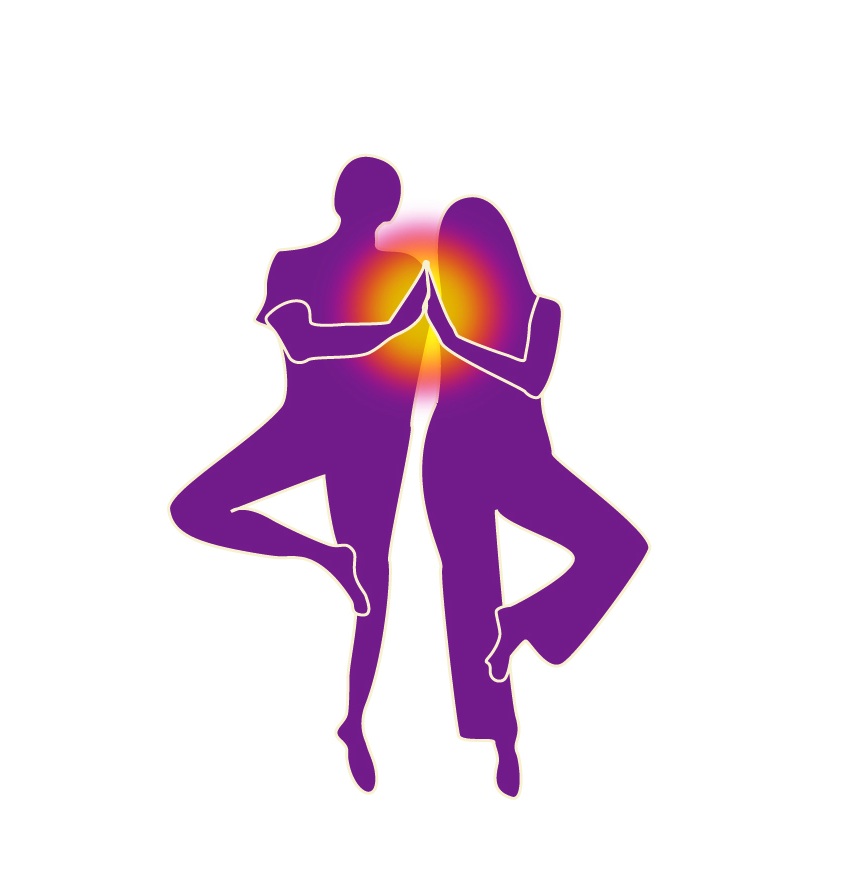by Jasmine | Jan 1, 2016 | Yoga For Weight Loss, Yoga Health
 Guest Blog By Heather Rudalavage RD LDN
Guest Blog By Heather Rudalavage RD LDN
What Yoga Positions Help You Lose Weight?
One of the most challenging pieces of the the intuitive eating approach is that people can’t see how it can work. People, in general, don’t trust themselves. They believe they won’t be able to stop eating chocolate or cake or pizza. Maybe it’s because the diet message is so pervasive in our society, or maybe we are just narcissistic in nature, but it continues to astonish me how much my clients rely on external sources to know what, when and how much to eat. Odd, because hunger is a physiological response similar to breathing or having to pee. When we visit the restroom, we don’t say, “did I pee too much?” When we take a breath, we don’t say, “it’s not time to breathe yet”. But clients ask me all the time, “how much should I eat?” Or they say, “I am hungry all the time.”
Geneen Roth, in her book, Women, Food and God states that overeaters fall into one of two categories, restrictive and permissive. Restrictive eaters want, need, must follow strict guidelines. This is how they perceive having control of their life. They can tell you the glycemic index number for a banana, or the grams of carbs in a soda. Permissives on the other hand, figure that since life can’t be controlled, they might as well check out and numb themselves with food. They hide behind a care free exterior. Think of the jolly, round image of someone you know, and they are likely permissive eaters. Both types of overeaters are attempting to control their environment and use food to distract themselves from their real feelings, and even deeper levels of figuring out why they feel the way they do.
Despite what many believe – that eating intuitively means eating whatever you want when you want to – Intuitive Eating really means loving yourself enough to want to honor your body with nourishing, healthy food. It means eating when you are hungry and then stopping when you are satisfied. This is where some of my best clients get tripped up. They are okay with allowing themselves to eat when they are hungry and to chose a food that they really want to eat, but they end up binging because they can’t or don’t know how to really tune in, listen and care for their bodies. Going through a “honeymoon” phase is normal with IE, but if you find yourself struggling with getting past the honeymoon phase, then it is time to look within to see if you can find the reason for not being able to care for yourself and respect yourself enough to not want to binge anymore. Often, a long history of traditional dieting is partially to blame.
Sometimes, nourishing yourself means eating a hot fudge sundae, but if you find yourself wanting 2 or 3 hot fudge sundaes every day for weeks, then something else is going on. It’s time to do some inquiring and ask yourself what is the real reason you want a hot fudge sundae every day? If you take this important step you will be able to break out of the honeymoon phase and will begin to lose weight (if you have extra weight to lose).
I wish I had the answer to my clients struggles with food, I wish I had the magic pill or the right words, or even the perfect meal plan, but the bottom line is that the answer lies within them, lies within you. All I can do is help my clients to find their answer. If you drop the dieting mentality and question the voices in your head that tell you that a particular food is bad, (whose voices are they, by the way?) you will be able to tune in and when you tune in, your body will tell you what, when and where to eat. Sometimes your body may say chocolate and sometimes it may say a fresh berries, but whatever your body says, listen, because it is the right choice for you at that moment.
===============================================================================================
Heather Rudalavage RD LDN
www.Intuitive-Nutrition.com
Twitter@IntuitiveRD
Facebook.com/Intuit.Nutrition
Connecting mind, body and spirit.
https://www.synergybyjasmine.com/vitality-health-coaching/
Attention: New, For a Limited Time…
Take Advantage of your “Path to Vibrancy – Coaching Session.”
During this powerful one-on-one FREE coaching session we’ll work together to…
=> Create a crystal clear vision for the kind of life you want, full of vibrance and energy
=> We’ll uncover hidden challenges that may be draining and depleting you and you will have a plan on how to cut them out.
=> You’ll leave the session empowered, re-energized and inspired to take charge of getting more vitality into your life naturally.
To claim your session now, use this link to set up your session.
by Jasmine | Dec 30, 2015 | Yoga Health
Practicing Yoga with the Dog

practicing yoga with the dog
When I first got my dog, she was about 12 months old, still a puppy. She would chase her tail around in circles, be so zippy at the thought of going outside and was a furry spitball of energy and enthusiasm. When I first started doing yoga at home with some of my favorite yoga DVDs like Shiva Rea, Rodney Yee, Beth Shaw YogaFit or Desiree Rumbaugh she thought it was playtime and would be barking and yipping at me. At first I locked her in the basement but that didn’t work so well since she kept screaming and yelling. (It’s not easy to be in shivasana when you hear BARK BARK WHINE WHINE BARK BARK WHINE WHINE WHINE …..
So then I let her be in the room with me again. She loved to be on my mat while I was practicing on it. Did you ever try to jump around a pile of breathing fur when you are doing sun salutations?
After a few dozen times of attempting to be calm and yogic when dealing with her (being compassionate, patient, detached) one day I yelled at her at the top of my lungs “ GET THE F—K OUT you F—HEAD”! Just so you know, most people that know me well would not say I have a temper, I’m fairly even keeled and not prone to angry outbursts. After I yelled at her like that, the furry crackhead never tried to distract me when I was on my mat again.
I kind of missed the interaction in a way though so we negotiated a compromise. She had to stay away from me when I was in the standing and seated postures. When I am in shivasana or in a long restorative pose, she can lay on my lap. It’s kind of soothing…she is almost like an extra yoga prop and helps me get more relaxed when I am ready to drop down into the final relaxation.
Granted it’s not much exercise for your fleabag. A few goods way to let them get some exercise and is quite stimulating as well for dogs (that are hound breeds especially). Is to have the dog hide (put them in a closet or basement) Then take a small treat, hide it somewhere in the house and let the dog out and say “Go Get It!” Your dog might not get it the first few times but they will get it by the 10th time if not sooner.
You can also play hide and seek with your dog. If you have small kids they will love to join in this too.
You could also just play some music and grab your dog front legs and just start to dance with them. My dog doesn’t love this but she does tolerate it.
What about you and your dog or cat? Do you do yoga, exercise or dance with them?
by Jasmine | Nov 15, 2015 | green smoothies, Yoga Health
No, silly…. I’m not talking about a shot of vodka as you wake up …… I’m also not talking about anything with caffeine in it.
I used to have a protein powder shake with concentrated dried vegetables and some ground chia and flax seeds. The past few days I decided to change it up. I was feeling a bit “bulgy” so wondered if I started to incorporate more green… especially at the start of my day, what the impact would be.
I blend spinach and lime juice….. although you can mix it up with lemon, maybe some cucumber and today I added a bit of squeezed orange juice. I don’t like to have too much fruit in the morning since that is still sugar… it’s not refined but there is a crash even if it’s from a natural source.

Drink To Energize – My usual breakfast routine with my green smoothie.
Having my green smoothie really does zip me up in more ways than one. I get over that dragginess in the morning pretty quickly….
A lot of health-conscious folks will show you all kinds of ways to make the smoothie… maybe adding almond milk, a banana, soy milk, regular milk or just a bunch of fruit.
I consider myself the “Smoothie Queen”…. I’ve probably made thousands of smoothies in my life with all kinds of variations.
If you make it with some kind of milk, it’s usually refined and de-nourished since the production process of something like almond and soy milk usually ends up robbing it of it’s essential natural nutrients. Naturally soy and almonds are some of the most nutrient dense things you could eat. With Monsanto genetically modifying soy and most of the seeds in the industrialized farm world, you end up getting soy that is not ideal from a nutrition perspective.
( If you make your own almond or soy milk then you are getting a ton of nutrients but not sure who would be willing to do this).
A bit of fruit in the smoothie is ok but I wouldn’t load it up with a ton of it since the natural sugars in fruit end up resulting in a sugar crash. Technically lemons, limes and avocado and tomatoes are fruit but they are low sugar-fruits. I wouldn’t event consider getting any kind of packaged juice and adding much of it to your green smoothie since these are filled with all kinds of refined sugars…. sometimes high fructose corn syrup.
I actually seem to think more clearly in the morning when I have my green smoothie…. I’m not usually that hungry in the am so this actually does tide me over till noon or so. If for some reason I get hungry and can’t get to lunch then a few handfuls of sesame seeds or raw almonds does tide me over for awhile.
Having the same thing for breakfast every morning might seem monotonous for some but mornings are such a hectic time with getting things ready for the baby, my hubby going off to work and the dog so when there are less decisions about what I am going to eat, that just frees up my brain for other things.
I’ve also noticed some of my bulges have gone missing… YAY! I’m just starting to incorporate more green into every meal. If I have some kind of chicken, lentil dish then I can just heat that up over spinach……..
Spinach is definitely my veggie of choice. It has a slightly sweet taste and it never overpowers the other flavors. It cooks up very fast ( like 2 minutes). I actually don’t even bother to cook it a lot… if I heat up a dish like chicken or lentils and just put it over some spinach, then the greens will just wilt…. voila…. less cooking, less dishes. It doesn’t have the bitter taste that a lot of other greens have so it is much more palatable than most of the other ones. It’s also easy to get at any kind of supermarket and it’s pre-washed usually so it’s easy to prepare.
by Jasmine | Oct 1, 2015 | Alternative Health, Prenatal Yoga, yoga fertility, Yoga Health, yoga infertility

Breathing and Conceiving? Yoga and Fertility
Breath is Life. The first thing we do when we are born is inhale, the last thing we do when we die, is exhale. Our lives are made up of all the breaths in between. Breathing is essential to life, but it is also essential to creating life.
Stress and Infertility – How Yoga Helps Infertility
When we go through infertility we are often stressed, we breathe shallowly and our body starts to hold inside all the disappointment, hurt and fear. Both physical and emotional pain gets stored in our bodies as stress. When we are stressed-Cortisol is released in the brain, which impedes our ability to conceive by affecting the hormones that are responsible for ovulation and healthy gynecological function. Yoga teaches us to open the body with the breath, creating the ability to arrest the stress response, balance hormones and return the body, emotions and mind to a relaxed state.
You can literally learn to “breathe to conceive” as breath affects your state of being on every level, you learn to receive life literally and figuratively. The breath is the most effective tool we have to stop the “fight or flight” stress response of the sympathetic nervous system and return it to “the relaxation response” of the parasympathetic nervous system.
Improved Physical Health
Yoga can also impact the general reproductive health of women trying to conceive. Yoga tones and strengthens the muscles that support reproductive organs and improves spinal alignment, enabling better circulation and improved capacity and quality of respiration. For women who are taking infertility drugs, better breathing can also help the body fight off the toxic effects of those drugs.
Reducing the Physical Effects of Stress
Yoga is perfect for dealing with one of the most pervasive mind/body fertility challenges: stress, often stress caused by the inability to get or stay pregnant. Women experiencing infertility are often stress- and pain-filled, saddened and angry. These emotions generate chemicals in the body that weaken immunity and make for a less hospitable environment for a new life. Yoga, because of its use of relaxation breathing techniques, combined with the flushing out of physical toxins, provides an antidote to the negative physical impacts of anxiety, anger and depression. It also helps to change your perspective to a more objective, detached state of mind so you start to view your challenges with more calm and control.
To treat infertility with yoga there a some basic steps you can take to get you started. This first thing is to reduce your stress level. Stress can cause your hormones and organs to become off balance. When you are not in balance your body is not working to it’s full potential. Yoga breathing will help calm the body and mind replacing the negative thoughts with positive.
There are specific poses in yoga that focus on your reproductive organs and pelvic area to increase blood flow and stimulate energy. There are also poses that soften the abdominal area clearing tension from the uterus, ovaries and fallopian tubes which will increase their productivity. Where are Fertility Yoga Classes in Philadelphia? Does meditation help infertility?
Yoga will bring balance to your body, mind, and soul specifically your hormone levels. These poses will improve your glandular function which will stabilize hormones. In order for the reproductive process to occur your hormones must be in balance. What are the best Yoga Fertility Poses? Can Infertility be helped with Yoga?
Yoga and Fertility, Infertility – Not the Cure-all
This is not to say that yoga is an instant fertility potion, or that it works for everyone. It is not a quick-fix. It does aid to keep your inner peace, which can be very hard when struggling with infertility due to the frustration, anxiety, sadness and despair that infertility can produce.
Attention Ladies: New, For a Limited Time…
Take Advantage of this special “Path to Pregnancy -Coaching Session.”
During this powerful one-on-one coaching session we’ll work together to…
=> Create a crystal clear vision for the kind of pregnancy that you’d like to create using holistic and natural fertility methods.
=> We’ll uncover hidden challenges that may be sabotaging your fertility health.
=> You’ll leave the session empowered, reenergized and inspired to take charge of getting pregnant naturally.
I only do 5 free sessions a month so spots are limited. To claim your session now, email me at jasmine@synergybyjasmine.com
by Jasmine | Apr 16, 2015 | fertility health, Prenatal Yoga, yoga fertility, Yoga Health, yoga pregnancy
Often women that are pregnant discover yoga since it is a way to heal, gain body awareness and nurture oneself. Yoga when you are pregnant helps to strengthen the body for child bearing and aids in relieving the common discomforts the body experiences. Yoga helps you find the time and space to look within yourself, allowing you to openly explore your own intrinsic knowledge about the cycles of life. It is an opportunity to come together with a circle of women to share and connect with some of the dreams and scares that pregnancy brings as well.
A prenatal and postnatal yoga practice can help you
- Support your health before and after pregnancy
- Connect you with other parents who are at all stages of pregnancy
- Improve your postpartum recovery
- Helps to strengthen the body for child bearing and aids in relieving the common discomforts the body experiences.

Best and Worst Yoga Poses to do When You are Pregnant
- Alleviate many of the discomforts of pregnancy such as nausea, constipation, varicose veins, swelling, back pain and sciatica.
Cautions about practicing yoga while pregnant:
Since nausea is common during the first part of pregnancy it may be helpful to practice in a well-ventilated room. During the second trimester your growing belly will require modifying some poses. Use common sense and avoid putting too much pressure on the abdomen in poses like Head To Knee Postures, Seated Forward Fold, as well as Seated Spinal Twists. You may choose to reduce the amount of vinyasa if generating heat in the body makes you uncomfortable.
Best and Worst Yoga Poses to do When You are Pregnant
The third trimester will require you to continue to adapt and even omit certain postures. Standing poses like Extended Triangle Pose, and Extended Side Angle Pose can help relieve back pain. And a simple inversion such as Legs-Up-the-Wall-Pose can help to relieve puffy ankles. Some poses might require additional props or support. Through each trimester the most important thing is to tune in to what your body is telling you and alter your practice accordingly. During and after pregnancy, try not to be attached to your level of flexibility. Pregnancy is a great time to learn how to emotionally, spiritually and physically release.
Other words of wisdom for pregnant women interested in yoga: Linking yoga postures with breath will lead you to new discoveries, bringing awareness to the mind, body and soul, and also the spirit of your growing baby. Your practice will help to foster a sense of calm and acceptance as well as strengthen the uterus and pelvic muscles, aid in digestion, exercise the spine and increase overall comfort. Yoga can also alleviate many of the discomforts of pregnancy such as nausea, varicose veins, swelling, back pain and sciatica. Being in a community gives you access to a safe circle so you can freely discuss any issues, from discomforts and concerns, to the wonderful new changes your body and baby are experiencing. It is very important to inform the teacher of any complications (current or past) or any treatment that you are receiving.
During pregnancy ligaments around the joints become loose and soft. Care should therefore be taken not to overstretch the body. The abdomen should remain relaxed and soft at all times to allow room for the baby.
Pregnancy can make you feel more tired than usual. It is essential to be aware of this and try not to do things to the point of fatigue. If you feel tired after yoga or any other physical exercise, it means that the practice has been faulty or that you have done too much. Signals such as pains, stitches, cramps, nausea, dizziness, headaches and contractions should never be felt during or after yoga practice. Yoga generates energy, rather than dissipating it.
by Jasmine | Apr 4, 2015 | yoga fertility, Yoga Health, yoga infertility
-Increase Circulation to the Reproductive Organs
-Balance Hormones
-Reduce Stress
You made have already heard that inversions like headstand and shoulder stand are powerful fertility aids. Those positions didn’t make our list for one simple reason: they should be done with proper supervision. These poses made our list of the five best yoga positions to aid fertility because they don’t need supervision. In fact, they can be done in the safety and privacy of your home with no risk.
1. Supta Baddha Konasana – Reclining Goddess Pose
This pose has the ability to soften the internal organs, open the pelvis, unburden the heart and calm the mind. I like to use one or two bolsters, but you can use a bolster and a block, four blankets or a combination of the above to create your own cozy haven for relaxation. Set up a block or bolster for height crosswise. Then lay (for the spine) a bolster or blankets perpendicular to the first. You should have a gentle sloping ramp where the head is highest, then heart, then pelvis on the ground. Your torso is supported at an angle, your hips are on the floor and you can lean back, draw your heels in, soles touching, and relax. If your groins are overly tight or loose, you may benefit by a block, or pillow under each knee to soften the groins and support the pelvis in relaxing.
The key is that once you are settled to stay and breathe deeply, allowing the mind to scan the body for tension and release it breath by breath. I also like to infuse the internal organs with white light as you inhale, and allow yourself to release any tightness on the exhale, creating more space internally with each breath. You can stay for 5-15 minutes in this pose for the greatest benefit. Put an eye pillow or eye covering on. This is also a great pose for PMS.
2. Double Pigeon – Seated Legs Bound Cross-Legged
If your hips are very tight see Reclining half pigeon below as an alternate pose. Double pigeon helps to release stored emotional trauma in the periformis muscle, which guards the gateway of energy in the hips and pelvis. The hips are the sister hinge to the jaw and when released, tension, emotional pain and chronic holding get released, allowing increased blood flow, and energy to the reproductive organs in the pelvis. Double pigeon is a seated pose where one shin stacks perfectly on top of the other, and creates an equilateral triangle from the shins to the pubic bone.
Feet are flexed, spine long and pubic bone threads back so that the hips can release up and over the bent legs. Breathing is key in honoring your body’s edges of resistance and allowing it to open when it’s ready, establishing trust. You can extend the arms straight in front, with your elbows on the floor and create prayer pose with your hands and place your thumbs at your third eye, fore fingers on the forehead or extend the fingers on the ground and walk the hands out until your arms are straight. Breathe until the discomfort softens, and then change sides, alternating opposite foot on top of knee. Shins parallel.
If doing this doesn’t help, try sitting in a chair and crossing you ankle over your knee and let gravity take it down to soften the hip. Hinge forward from the hips and breathe.*
3. Reclining Half Pigeon (Seated Thread the Needle)
A safer version for the knees is to lay on your back. Hug both knees into your chest. Lower your left foot to the floor and stack your right ankle on top of your left knee. Reach through the center hole and clasp your left shin. Flex the top foot and soften the bottom ankle. Gently pull the leg in to activate the periformis on the right side. Breathe deeply and visualize more space where you feel the tightest. Breathe until it softens. Change sides. Be aware of added unnecessary tension in shoulders, jaw and face, keep breathing deeper to soften any reactions to the sensation. Make sure you’re resting your head on the floor.
 Guest Blog By Heather Rudalavage RD LDN
Guest Blog By Heather Rudalavage RD LDN



